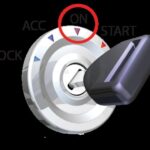Infiniti vehicles, known for their luxury and performance, utilize a sophisticated On-Board Diagnostics system (OBD-II) to monitor engine and vehicle health. This system can detect various issues, triggering diagnostic trouble codes (DTCs), commonly known as Infiniti Obd2 Codes. These codes provide valuable insights into potential problems, aiding technicians in accurate diagnosis and repair. Understanding these codes can empower you to address car troubles effectively.
Common Infiniti OBD2 Codes and Their Meanings
Infiniti OBD2 codes follow a standardized format, consisting of a letter and four numbers. The letter indicates the system related to the code (e.g., “P” for Powertrain), while the numbers specify the specific issue. Here’s a table outlining some prevalent Infiniti OBD2 codes:
| Code | Potential Problems |
|---|---|
| P0101 | Mass Air Flow (MAF) sensor issues, vacuum leaks, intake manifold gasket problems |
| P0171 | Lean fuel mixture, potential vacuum leaks, faulty MAF sensor, fuel pump or injector problems |
| P0300 | Random misfire, potential issues with spark plugs, ignition coils, fuel injectors, or other engine components |
| P0420 | Catalyst System Efficiency Below Threshold (Bank 1), indicating a potential catalytic converter problem |
| P0442 | Evaporative Emission Control System (EVAP) Small Leak Detected, often related to a loose gas cap, but could indicate more serious EVAP system issues |
| P0500 | Vehicle Speed Sensor (VSS) malfunction, potentially affecting speedometer accuracy, cruise control, and other systems relying on vehicle speed data |
| P0700 | Transmission Control System (TCS) Malfunction, signaling a potential problem within the transmission system |
| U0100 | Lost Communication With Engine Control Module/Powertrain Control Module (ECM/PCM), indicating a potential issue with the communication network of the vehicle |
Deciphering Infiniti OBD2 Codes: Beyond the Basics
While the table above provides a starting point, numerous other Infiniti OBD2 codes exist. Factors like the specific Infiniti model and year can influence the meaning of certain codes.
Furthermore, a single code can sometimes have multiple underlying causes. For example, a P0300 random misfire code could stem from faulty spark plugs, ignition coils, fuel injectors, or even low compression within the engine cylinders.
Utilizing Infiniti OBD2 Codes for Effective Troubleshooting
Accessing Infiniti OBD2 codes requires an OBD-II scanner, a readily available tool that connects to your vehicle’s diagnostic port. Once connected, the scanner can retrieve and display stored trouble codes.
Important Note: While retrieving codes can provide valuable clues, it’s crucial to remember that codes alone don’t pinpoint the exact problem. They serve as indicators, guiding further diagnosis. A qualified technician possesses the expertise and specialized equipment to interpret codes accurately, perform comprehensive diagnostics, and implement appropriate repairs.
Infiniti-Specific Codes and Expert Assistance
Certain OBD2 codes, particularly those starting with “P1,” are specific to Infiniti and may not be universally defined. These manufacturer-specific codes require specialized knowledge and diagnostic tools for accurate interpretation.
If you encounter unfamiliar codes or complex issues, consulting a certified Infiniti technician is highly recommended. They have access to the latest diagnostic software, technical service bulletins (TSBs), and in-depth knowledge of Infiniti systems, ensuring accurate diagnosis and repair.
Addressing Infiniti OBD2 Codes: Next Steps
Don’t ignore your Infiniti’s warning signs. If your check engine light illuminates or you suspect a problem, utilize an OBD-II scanner to retrieve diagnostic trouble codes. Research the potential causes associated with the specific codes you encounter. For complex issues or Infiniti-specific codes, seek the expertise of a qualified Infiniti technician for accurate diagnosis and effective repair.
